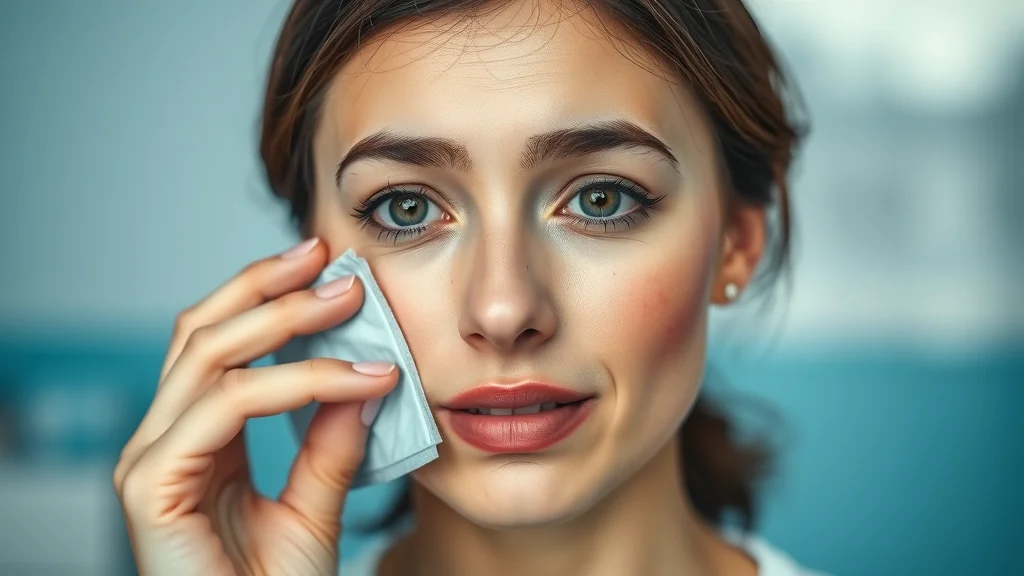Did you know that over 15 million cosmetic injectable treatments are performed globally every year, yet less than half of patients fully understand what’s actually being injected — or the long-term impact these products can have? The world of cosmetic injectables—ranging from popular dermal fillers to the ever-recognizable botulinum toxin (commonly known as Botox)—is booming. But behind the glossy before-and-after photos and enticing clinic specials lies a web of facts, myths, safety questions, and crucial details that most people never hear about until after their appointment. If you’re considering a cosmetic injectable or simply want to separate truth from hype, this comprehensive guide reveals what really matters most for your face, your health, and your satisfaction.
The Hidden Truth Behind Cosmetic Injectables: Eye-Opening Statistics
The demand for cosmetic injectables is at an all-time high. According to the latest data from the American Society of Plastic Surgeons, cosmetic injectable procedures—including dermal fillers, botulinum toxin (Botox), and fat injections—have surged by more than 300% in the last two decades. Despite this, surprising gaps in patient awareness persist. Around 60% of individuals surveyed believed injectables are “risk-free” when administered at medical spas, and nearly 1 in 3 had misconceptions about which providers are actually qualified to perform such aesthetic procedures. It’s also worth noting that over 50% of adults considering injectables are unclear about potential side effects—despite the fact that even FDA approved treatments carry medical risks if not managed correctly.
Even more strikingly, patient satisfaction correlates closely with provider experience, not just the type of injectable. Complication rates are up to five times higher in non-specialist settings, and more than half of reported issues stem from inadequate aftercare information. As the market grows—and choices multiply—understanding the statistics behind cosmetic injectable safety, efficacy, and patient awareness is more important than ever, especially if you want results that look natural and minimize your risk of complications.

What You’ll Learn About Cosmetic Injectables
The different types of cosmetic injectables, including dermal fillers and botulinum toxin
Unexpected facts and myths about cosmetic injectable treatments
Potential side effects and safety measures
How cost, longevity, and results vary for popular choices
Expert insights and frequently asked questions
Understanding Cosmetic Injectables: An Overview
Cosmetic injectables are non-surgical treatments administered by healthcare professionals to soften facial lines, restore volume, and boost confidence. They’ve become a mainstay in modern cosmetic procedures because they're effective, require minimal downtime, and often yield immediate results. The two most common main types are dermal fillers—which help smooth fine lines and add volume—and botulinum toxin, which reduces wrinkles by relaxing the muscles of the face. Less common but growing in popularity are fat injections, where your own fat is used as a natural filler.
The choice of injectable depends on your unique treatment goals, medical history, and the specific areas you want to address. While ads may promise instant youth, real results come from choosing the right product, provider, and aftercare plan. This section lays the groundwork for understanding the science, skill, and decision-making that separates a beautiful, natural-looking outcome from an experience you’d rather forget.

"Many people view cosmetic injectables as quick fixes, but a deeper understanding is crucial for safe and satisfying results." — Board-Certified Dermatologist
Types of Cosmetic Injectables: Dermal Filler, Botulinum Toxin, and More
Dermal Filler: Types, Composition, and Common Uses
Dermal fillers are gel-like substances injected beneath the skin to replace lost volume, smooth lines, enhance facial contours, and rejuvenate appearance. The most popular fillers include hyaluronic acid (a naturally occurring substance in the skin), calcium hydroxylapatite, and poly-L-lactic acid. Each type offers unique properties in terms of thickness, flexibility, and duration. Hyaluronic acid fillers are favored for their natural feel and reversibility, making them ideal for lips, nasolabial folds, and fine lines. Calcium hydroxylapatite and poly-L-lactic acid are more robust and often used for deeper folds or significant volume loss.
FDA approved dermal fillers address everything from mild creases to significant facial reshaping, offering a non-invasive alternative to plastic surgery. It’s crucial to understand that not all filler products are created equal—different brands and formulations may last anywhere from 6 months to 2 years. A personalized treatment plan recommended by a skilled provider ensures optimal placement, natural movement, and a balanced profile. Always request the product name and ask about its safety record and approval status before proceeding.

Botulinum Toxin: Uses Beyond Wrinkle Relaxation
Most people associate botulinum toxin solely with wrinkle relaxation, thanks to well-known brands like Botox, Dysport, or Xeomin. However, the use of this powerful neurotoxin goes far beyond softening facial wrinkles. Administered strategically, botulinum toxin can also treat excessive sweating (hyperhidrosis), chronic migraines, muscle spasms, and even certain medical conditions affecting the neck and eyes. It works by temporarily blocking the nerve signals that cause muscles to contract, making it particularly effective for dynamic lines—those caused by repeated facial movement.
Unlike most filler products that add volume, botulinum toxin aims to prevent and reduce existing lines and wrinkles by interrupting muscle activity beneath the skin. Results usually appear within 3–7 days and last from 3–6 months. Selecting a board-certified professional ensures precise dosing and avoids the dreaded “frozen” look. It's vital to understand both the benefits and limitations of botulinum toxin so you know exactly what to expect from this versatile cosmetic injectable.
Fat Injections: A Natural Alternative to Traditional Cosmetic Injectables
Fat injections, also known as fat grafting or autologous fat transfer, involve harvesting fat from one area of your body (such as the thighs or abdomen) and injecting it into the face or hands for enhanced volume and contouring. This method appeals to individuals seeking a more "natural" alternative, as the material used is from your body rather than synthetic or animal-derived substances. Fat injections are particularly beneficial for correcting significant volume loss, deeper wrinkles, or scarring.
This treatment typically requires a minor outpatient procedure under local anesthesia, and because the fat used is not foreign, allergic reactions are rare. The primary downside is that not all transferred fat cells will survive the process, which can impact overall results and sometimes necessitate multiple sessions. Discuss whether you're a candidate for fat injections with a cosmetic surgeon or plastic surgeon experienced in this technique, as their expertise is crucial for predictable, safe outcomes.
Comparative Table: Dermal Fillers vs. Botulinum Toxin vs. Fat Injections | ||||
Type |
Main Composition |
Primary Uses |
Longevity |
Key Risks |
|---|---|---|---|---|
Dermal Fillers |
Hyaluronic acid, calcium hydroxylapatite, poly-L-lactic acid |
Smoothing fine lines, restoring volume, lip/cheek enhancement |
6–24 months |
Swelling, bruising, rare vascular occlusion |
Botulinum Toxin |
Purified neurotoxin |
Relaxing facial wrinkles, treating migraines/excessive sweating |
3–6 months |
Asymmetry, drooping, headache, rare allergic reaction |
Fat Injections |
Patient’s own fat |
Volume restoration, deeper lines, natural contouring |
Potentially permanent* |
Swelling, lumpiness, uneven absorption |
How Cosmetic Injectables Work: Science and Process
At their core, cosmetic injectables work by targeting structural and cosmetic concerns beneath the skin. Dermal fillers add volume and stimulate collagen by sitting beneath the surface, literally pushing up folds or hollows that contribute to lines and wrinkles. Hyaluronic acid, for instance, draws in water for a plumping effect while also supporting the skin’s own healing mechanisms. Botulinum toxin, on the other hand, interrupts nerve signals to the muscles of the face that repeatedly crease the skin.
The administration process is quick, usually lasting less than 30 minutes, but requires meticulous precision. After cleansing the target area, your provider uses fine needles or cannulas to inject the chosen product at just the right depth for your specific concern. Most patients experience only minor discomfort and can return to daily activities within hours. However, outcomes hinge on the expertise of the injector, their understanding of facial anatomy, and the suitability of the chosen product to your needs. Always ensure that a reputable and skilled provider guides you through the process, from initial medical history review to aftercare instructions.
Safety and Side Effects of Cosmetic Injectables
Common and Rare Side Effects of Dermal Fillers and Botulinum Toxin
Like all cosmetic procedures, cosmetic injectables carry potential side effects. The most common include swelling, bruising, redness, and mild tenderness at the injection sites. With dermal fillers, there’s a rare risk of lumps, unwanted movement, or vascular occlusion (blockage of a blood vessel), which can be serious if not caught early. Most reactions resolve within days, especially when FDA approved products are administered properly.
Less frequently, patients may experience allergic reactions, persistent swelling, or asymmetry. With botulinum toxin injections, drooping of eyebrows or eyelids can occur if the product spreads to unintended muscles. Unlicensed providers, inexperienced technique, or poor-quality filler products can dramatically increase these risks—underscoring the importance of choosing a qualified professional for your cosmetic injectable treatments.

Minimizing Risks: Choosing Qualified Providers for Cosmetic Injectables
The single most effective step you can take to minimize side effects and maximize satisfaction is partnering with a qualified provider—ideally a board-certified dermatologist, plastic surgeon, or experienced nurse injector under the oversight of a medical director. Qualified professionals are trained to assess your medical history, choose the most appropriate option (from among the main types of injectable), and provide tailored aftercare to reduce complications. They’ll also guide you through realistic expectations and explain exactly how cosmetic injectables interact with your unique anatomy.
Key questions to ask your provider during consultation include: “Are you board certified for this procedure?”, “What brand and type of injectable do you recommend for my needs?”, and “How is a complication handled in this office?” A transparent, informative consultation is a clear sign of a professional clinic committed to your safety and results.
Benefits of board-certified injectors
Questions to ask during consultation
"Proper training and technique are the difference between a beautiful outcome and one with complications." — Experienced Cosmetic Nurse Practitioner
Cosmetic Injectables and Age: What Works Best for Older Skin
Aging affects every face differently, and the best cosmetic injectable for mature skin is not always the most popular one. As collagen and fat diminish naturally with age, dermal fillers (especially those based on hyaluronic acid) shine in restoring volume and smoothing moderate to deep lines and wrinkles. Some patients benefit from a combination of fillers and botulinum toxin to address both loss of fullness and overactive muscles of the face. For those experiencing substantial facial hollowing or volume loss, carefully performed fat injections may provide longer-lasting transformations.
A tailored approach is essential—your cosmetic surgeon or board-certified dermatologist will consider your skin quality, previous cosmetic procedures, general health, and desired results when developing your treatment plan. Don’t be surprised if your provider recommends less product but more appointments for gradual improvement. This approach minimizes risk while maximizing satisfaction in older adults seeking subtle, natural-looking rejuvenation.

Costs of Cosmetic Injectables: What to Expect
How Much Do 3 Syringes of Fillers Cost?
Cosmetic injectable pricing varies by region, provider experience, and product chosen. On average, three syringes of dermal fillers cost between $1,800 and $3,000 in the US, although this range can climb higher in large urban centers or for premium brands. Each syringe generally contains 1 mL of product, and the number necessary depends on the depth of lines, volume loss, and desired outcome. Transparent discussions of price—including all fees—should always happen before booking your treatment.
When considering cost, remember that FDA approved fillers usually carry a higher price due to rigorous safety testing and consistent results. Abruptly low prices can be a red flag for non-genuine products or unqualified injectors. Investing in a reputable provider protects not only your investment, but also your health, by minimizing risks and the chance of costly corrections down the road.

Understanding Tipping Etiquette: How Much Do You Tip for $500 Botox?
Tipping etiquette for cosmetic injectables varies by clinic and region. Unlike spa-based beauty treatments, most medical professionals providing injectables do not expect a tip—especially if they are board-certified physicians or work in a medical setting. If your $500 Botox is administered by a registered nurse or aesthetician at a medi-spa, a tip of 10–15% is considered generous but not obligatory. Ultimately, gratitude is most appreciated when paired with loyalty and referrals, but never feel pressured to tip in a clinical environment unless you truly wish to do so.
Always check your clinic’s policies before your appointment. Expressing appreciation through positive reviews or returning for future treatments is just as meaningful.
Sample Cost Comparison: Popular Cosmetic Injectables by City | |||
City |
Hyaluronic Acid Filler (per mL) |
Botulinum Toxin (per unit) |
Fat Injections (per session) |
|---|---|---|---|
New York |
$800–$1,100 |
$15–$22 |
$3,500–$5,000 |
Los Angeles |
$725–$1,000 |
$13–$20 |
$3,000–$4,500 |
Chicago |
$700–$950 |
$12–$18 |
$2,800–$4,200 |
Dallas |
$650–$900 |
$10–$16 |
$2,500–$4,000 |
Unexpected Facts and Persistent Myths About Cosmetic Injectables
Top 5 myths about dermal fillers and botulinum toxin
Clarifications with scientific evidence
Myths abound when it comes to cosmetic injectables. Here are five of the most common—and the science behind the truth:
Myth 1: Dermal fillers will always look “fake.”
Reality: A skilled injector can deliver results so natural that no one will guess you’ve had a treatment.Myth 2: Botox is toxic and dangerous.
Reality: Botulinum toxin is strictly dosed, FDA approved, and extremely safe when administered by certified professionals.Myth 3: All fillers are permanent.
Reality: Most hyaluronic acid and modern dermal fillers are temporary and can be dissolved if needed.Myth 4: Side effects are inevitable and severe.
Reality: Most patients experience minor swelling or redness, with serious issues being rare and often related to provider error.Myth 5: Anyone can perform a cosmetic injectable.
Reality: Inexperienced injectors increase the risk of complications. Always choose a qualified, board-certified professional.

Long-Term Results and Maintenance: What Patients Need to Know
The longevity of cosmetic injectables is affected by product type, targeted areas, your metabolism, and external factors like sun exposure or smoking. Dermal fillers generally last 6–24 months, with products like hyaluronic acid at the shorter end and calcium-based or fat-grafting procedures potentially offering years of improvement. Botulinum toxin effects wear off sooner, typically requiring touch-ups every 3–6 months.
Maintaining results isn’t only about scheduling regular appointments. Maintaining your general health, avoiding sun damage, and using high-quality skincare products all extend the life and appearance of your investment. Consult with your provider to design a treatment plan that supports ongoing enhancement while keeping natural movement and long-term safety front and center.

People Also Ask: Essential Questions About Cosmetic Injectables
What are cosmetic injectables?
Cosmetic injectables are non-surgical products (such as dermal fillers, botulinum toxin, and fat injections) that are injected beneath the skin to enhance facial features, soften lines and wrinkles, and restore a more youthful appearance. They offer a nonsurgical option for individuals looking to rejuvenate their look without downtime, with each type of injectable designed to target specific aesthetic concerns.
What is the best filler for older skin?
The best dermal filler for older skin typically depends on the individual’s skin quality and desired outcome. Hyaluronic acid-based fillers, such as Juvederm and Restylane, are commonly recommended for their ability to restore volume and smooth deep lines with a natural look that adapts to changing facial contours. Your medical provider will assess your medical history and facial structure to recommend the most suitable option, which may also include biostimulatory fillers like Sculptra for collagen support.
How much do 3 syringes of fillers cost?
The cost of 3 syringes of dermal fillers ranges from $1,800 to $3,000, depending on the product chosen, the experience of your provider, and your location. It’s always wise to request pricing upfront, confirm what’s included in the fee, and focus as much on provider experience as on the product itself to safeguard your investment and results.
How much do you tip for $500 Botox?
Tipping on medical aesthetic services like Botox is not required, especially when the provider is a physician or operates in a clinical setting. If you choose to tip—such as for treatments performed by an RN or aesthetician—a 10–15% gratuity is considered generous. Always prioritize the quality of care and skill over gratuity if you need to choose.
FAQs About Cosmetic Injectables
Are cosmetic injectables safe long-term?
Most FDA approved injectables are safe for long-term use when performed by qualified professionals. Always disclose your full medical history and follow aftercare instructions to reduce risks.How soon do results appear after treatment?
Many patients see noticeable improvement immediately for dermal fillers and within 3–7 days for botulinum toxin. Full effects are usually visible within two weeks.What steps can I take to reduce side effects?
Follow your provider’s pre- and post-injection guidelines, avoid blood thinners when safe, and use cold compresses to minimize swelling and bruising.Do cosmetic injectables hurt?
Most patients experience only mild discomfort during injection. Numbing cream or ice is often used to make the procedure more comfortable.Can anyone get cosmetic injectables?
Most healthy adults can safely receive injectable treatments, but pregnant or breastfeeding women and individuals with certain medical conditions should avoid them. A consultation with a qualified provider will determine your suitability.
Key Takeaways: Essential Insights on Cosmetic Injectables
Cosmetic injectables encompass dermal fillers, botulinum toxin, and fat injections
The provider’s qualifications impact safety and results more than the product itself
Aging, cost, and safety are interconnected considerations
Informed decisions reduce side effects and improve satisfaction
Ready to Learn More or Schedule a Consultation?
Take the next step with confidence—consult a board-certified professional for your cosmetic injectables journey.
 Add Row
Add Row  Add
Add 




Write A Comment